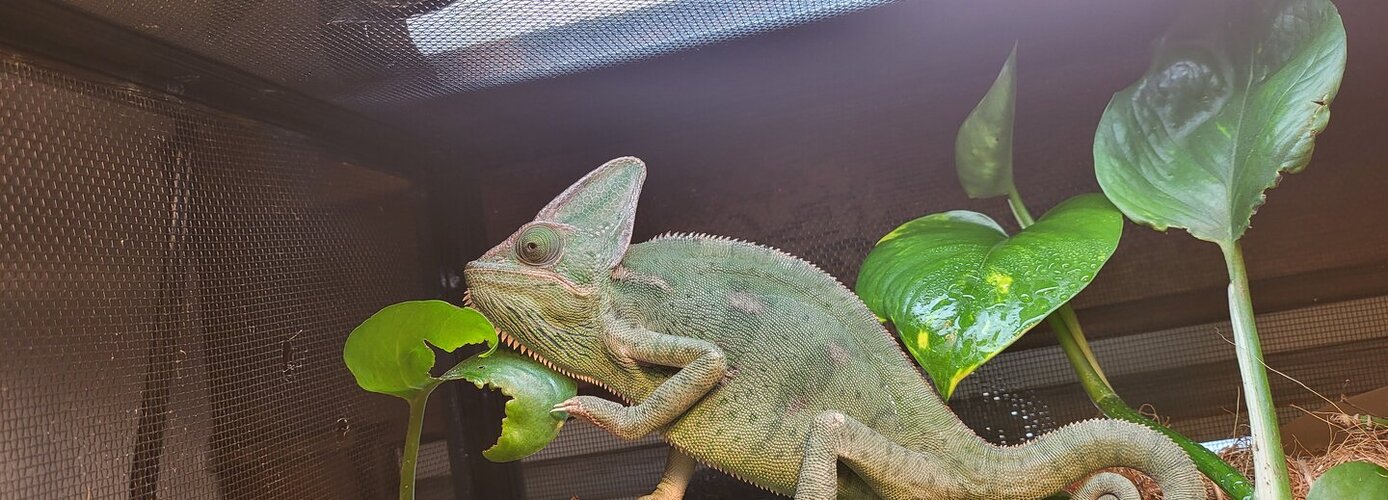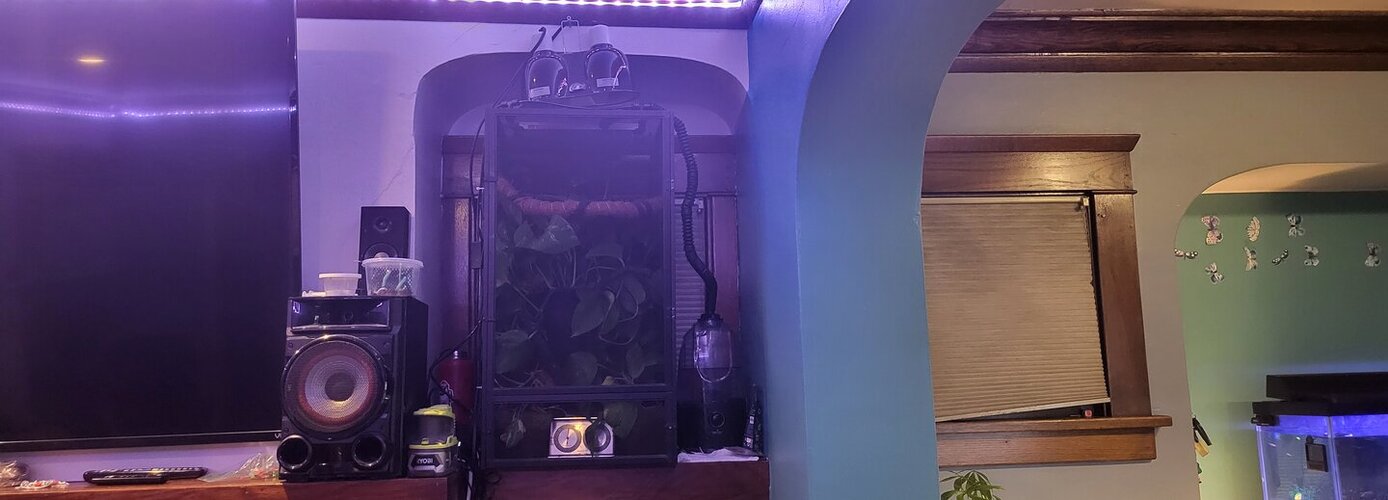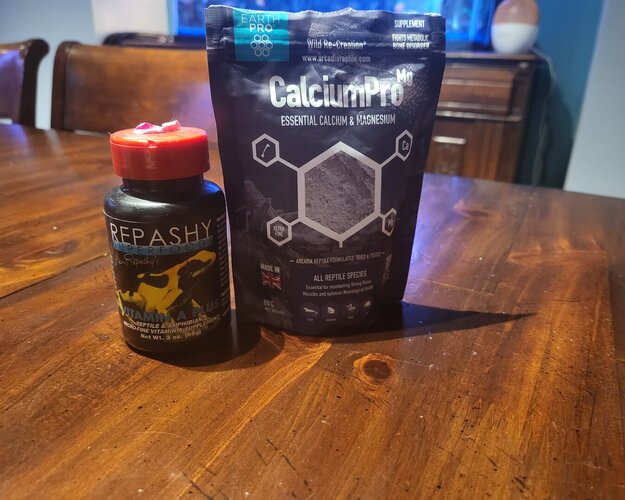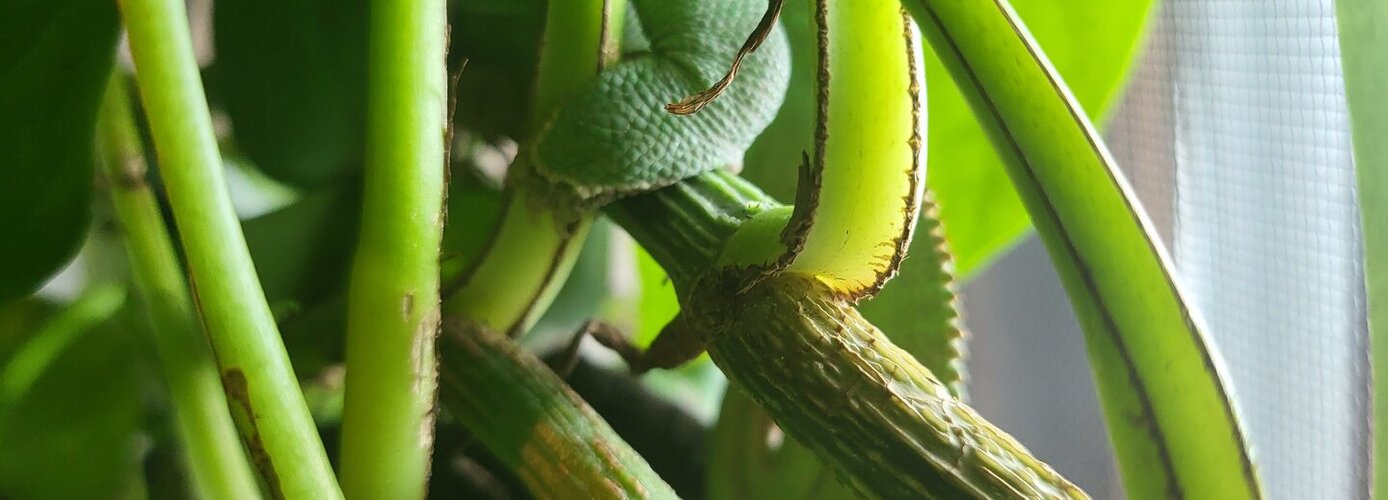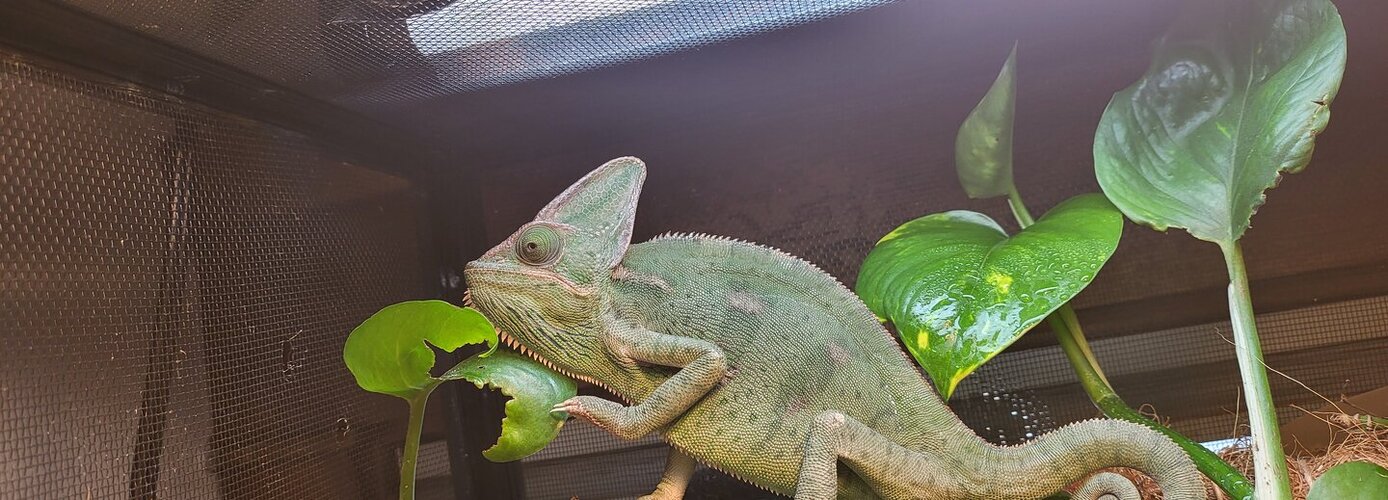Alex7383
Member
My male juvenile Veiled Chameleon has been refusing food since February. I have been feeding him by carefully opened his mouth and putting the food inside. We feed him crickets (mostly), and (sometimes / rarely) hornworms and silkworms. He ate a few times by himself but now he stays in the dark (bottom of his enclosure) so I usually have to pick him up and take him to the top to bask. Almost if he gets lost down there, when I pick him up, he's cold. The exotic vets here are super expensive so this is basically my only hope. If anyone has any tips or tricks or advice. Please let me know, my chameleons life may depend on it.

